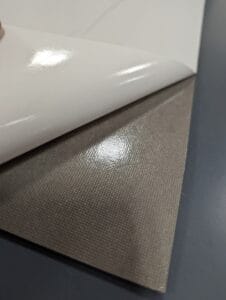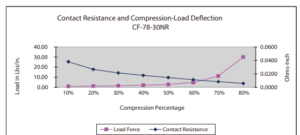
cf conductive foam
What is Schlegel CF Conductive Foam?
This foam is a nickel-copper plated polyurethane foam that is layered in between knitted, and non-woven conductive fabrics. It is usually made into precision die-cut gasket shapes.
How good is the Shielding Effectiveness ?
The graph below the electrical conductivity. Surface resistivity is less than .08 Ohm/sq. It is used primarily in high-frequency applications. The attenuation of the signal is usually higher than 90 dB on average. These values are great comparatively for conductive foam products.

What Applications utilize CF Conductive Foam?
Schlegel CF Conductive Foam can be supplied with or without PSA backing for ease of assembly. Some applications utilize a UL rating. Only certain thicknesses of this foam are UL listed. Applications that don’t have a lot of compression force do well with conductive foams. When using gasketing materials, compression force is a luxury to have- when that’s not available conductive foams can be a huge help. Compared to other EMI Gasketing options, Conductive Foam is very compressible. In addition, this conductive foam is RoHS compliant.
-Grounding Applications
-Door Seals
-Consumer Electronics
-Server Faceplates
More Information on Conductive Foam/Cutting.
This conductive foam comes in sheet stock for ease of die-cutting. At NEDC, we custom die-cut gaskets into unique shapes, and sizes. As mentioned above, we can supply a electrically conductive adhesive applied to one side for electrical continuity. In addition, we utilize high-pressure waterjet cutting machines to manufacture gaskets. For more information on conductive foam, please contact sales@nedc.com.